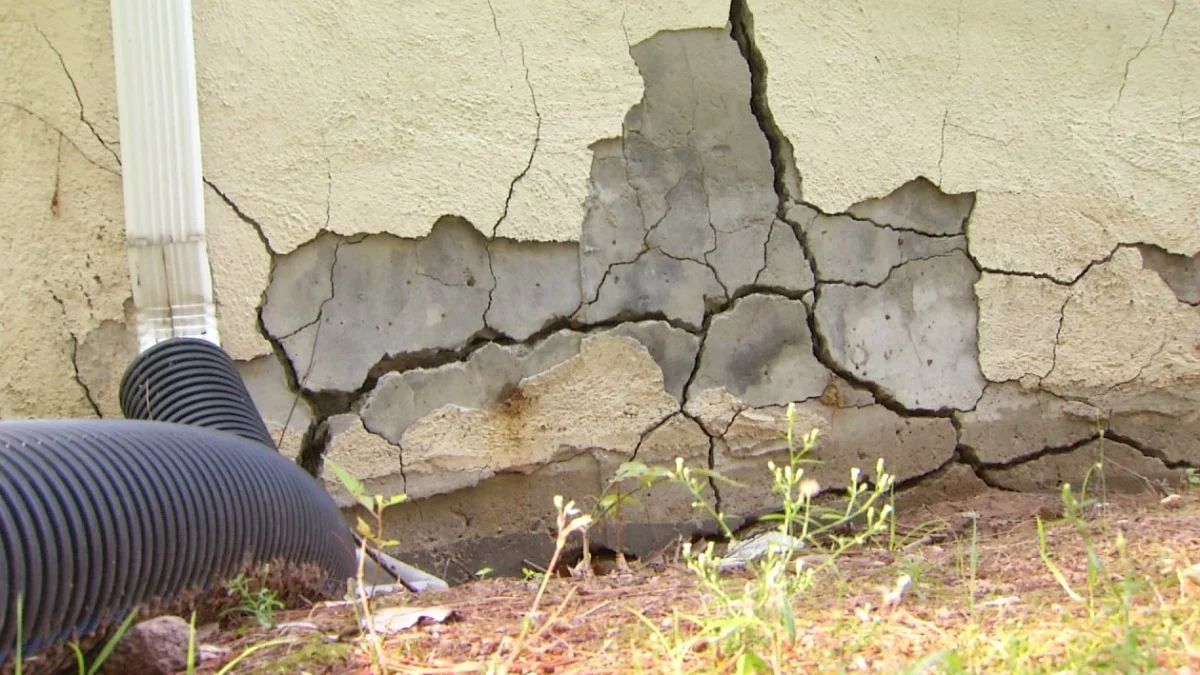Most of us take foundations for granted. These bases for our homes are largely constructed of concrete and/or cinderblocks and rest on top of cement footers poured into the soil. They may develop occasional cracks due to house settling and soil shifting or they may need to be treated to prevent leaks, but for the most part, we think little of these structures that we depend on daily.
Many homeowners in Connecticut and Massachusetts are not as fortunate. Several houses built between 1983 and 2015 are showing signs of serious deterioration in their foundations. As many as 34,000 homes may have this buried flaw that is beginning to manifest itself.
What could possibly have caused this? According to the Federal Emergency Management Agency, these foundations were constructed with concrete containing a naturally occurring chemical known as pyrrhotite. This iron sulfide likely came from the sand or gravel that was incorporated into the cement and it expands when exposed to water and oxygen.
As the compounds within the concrete get larger, they create cracks that eventually compromise the integrity of the entire home making it unsafe. Although the problem can be remedied, it normally costs anywhere from $100,000-$250,000. Obviously this creates great challenges for affected homeowners who had no idea they were resting on faulty foundations.
Contractors understandably use what is readily available, cost efficient, and dependable. Unfortunately, as in the case above, we don’t always know at the time of construction which components are dependable. Over the years, asbestos and lead have created costly problems even though they were used at the time in good faith.
Since these foundational flaws have been identified, changes have been made in the composition of the concrete but because no one knew what potential problems were being mixed and poured, homeowners have been left shouldering the costs without help from insurance. Some state and federal programs have provided partial relief, but most funds have been exhausted.
Jesus provided advice about constructing foundations many years ago. He advised they be built on solid rock and warned against locating them on shifting sands. Although the illustration alludes to homes and other buildings, His clear reference was to a person’s life.
He said in Matthew 7:24 “Therefore everyone who hears these words of mine and puts them into practice is like a wise man who built his house on the rock.” He went on to say that those who reject His teachings are building their lives on sand that will lead to collapse.
Too often we build our lives using whatever materials are close at hand, abundant, and cheap only to later discover serious flaws that lay the foundation for structural collapse. We readily incorporate the views and ideas of the world around us little knowing that we will be sorry for doing so later.
Jesus, however, knows all and He realizes the serious problems these faulty building components will cause and offers us the best products instead. They may cost a little more in the currency of self-denial, personal discipline, and temporary pleasure, but in the long run, our lives will withstand the storms of life. In His parable, Jesus didn’t say if the storms will come, but when. Every life has storms.
Sadly, our entire culture seems to be rejecting Jesus’ teachings in favor of cheaper and more attractive building materials. Consequently, the cracks of rising crime, pervasive poverty, family disintegration, and increasing heartache are becoming obvious in the foundations of our society.
Thankfully, Jesus has already paid the repair cost with His own blood for all who are willing to accept it. He died to replace our foundations, build our lives, and save our souls, and His funds will never be depleted.
May we as individuals and as a people realize that Jesus knows best and let us incorporate His principles and teachings into all of our lives that we might avoid the enormous consequences of crumbling foundations.
Blessings, George
